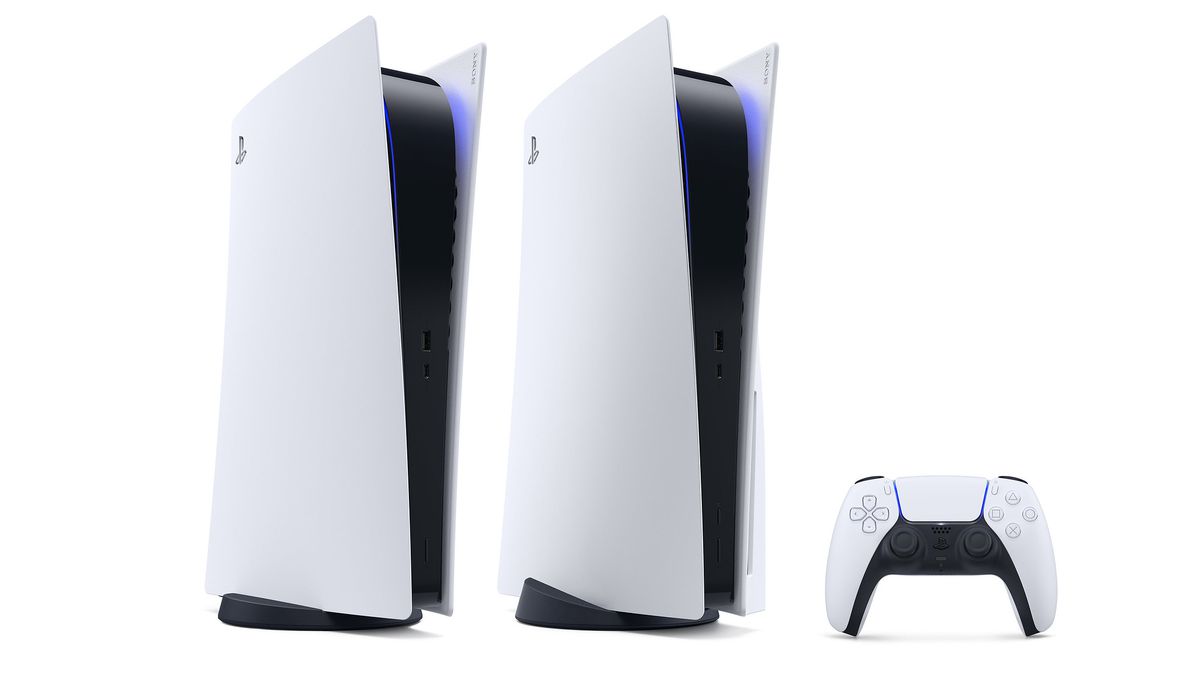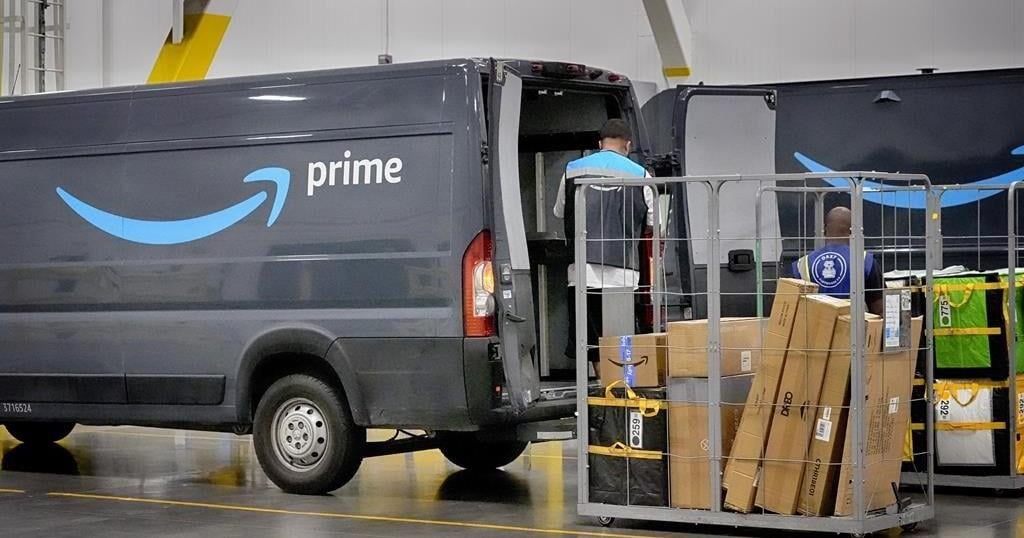The next generation of PlayStation is nearly here. After more than a year of drip-feeding information about the PlayStation 5, Sony has finally laid out the price, release date, and some of the games we can expect to play at launch.
With the PS5, it seems like Sony is sticking with the approach that made the PlayStation 4 so successful: sell consoles that can play first-party games from Sony’s storied franchises, and supplement that lineup with great third-party titles, too. You should expect to see better graphics in your games, and the PS5 will also support high refresh rates, which should make games feel smoother (if you have a display that supports those refresh rates). Plus, the PS5’s custom SSD promises to offer such a leap forward in loading speeds that it could change the way games are designed.
Microsoft also has a powerful console in the Xbox Series X, which promises better graphics and faster loading times, but it’s also selling the somewhat lower-powered Xbox Series S. The company continues to make Xbox Game Pass, its Netflix-like game subscription service, one of the best deals in gaming, and it doesn’t mind whether you play its games on an Xbox or a PC. And while the PS5 will play most PS4 titles, the new Xbox consoles boast backwards compatibility with not only Xbox One but also many Xbox 360 titles and some OG Xbox games as well.
We’ll have to wait and see which console proves to be the better buy. But here’s everything we know right now about what Sony has to offer.
There are actually two PS5 consoles, but they’re largely the same
Like Microsoft, Sony is actually selling two versions of its upcoming next-generation console. But unlike Microsoft, the only thing that differentiates those two versions is whether it has a disc drive and how much each one costs.
The console is powered by a custom eight-core AMD Zen 2 CPU and a custom AMD Radeon RDNA 2-based GPU that will provide 10.28 teraflops of raw graphical power. The PS5 also uses variable frequencies on both the PS5’s CPU and GPU, which could theoretically push the graphics to run slightly faster than normal when the CPU isn’t running at peak. Though it sounds like the difference is minimal based on this technical presentation (skip to 35:30):
And that game-changing SSD I mentioned earlier? It has 825GB of storage and 5.5GB/s of throughput — which could be fast enough to let game developers build levels without things like elevator rides or winding corridors that actually mask levels loading in the background. If you want to expand the console’s storage, though, you’ll only be able to do so with a Sony-certified M.2 SSD. PS5 lead system architect Mark Cerny said those certifications will happen “a bit past” the console’s launch.
The Xbox Series X will also have a custom SSD, one with a full 1TB of NVMe storage but a lesser throughput of 2.4GB/s. That could wind up meaning the Xbox Series X has slower loading times than the PS5, but it depends on a variety of factors — and since the consoles aren’t actually out yet, we can’t do a head-to-head comparison.
PS5 vs Xbox Series X vs Xbox Series S
| Categories | PS5 | PS5 (digital-only) | Xbox Series X | Xbox Series S |
|---|---|---|---|---|
| Categories | PS5 | PS5 (digital-only) | Xbox Series X | Xbox Series S |
| CPU | Eight Zen 2 Cores @ 3.5GHz with SMT (variable frequency) | Eight Zen 2 Cores @ 3.5GHz with SMT (variable frequency) | Eight-core AMD Zen 2 CPU @ 3.8GHz (3.6GHz with SMT enabled) | Eight-core AMD Zen 2 CPU @ 3.6GHz (3.4GHz with SMT enabled) |
| GPU | AMD RDNA 2 GPU 36 CUs @ 2.23GHz (variable frequency) | AMD RDNA 2 GPU 36 CUs @ 2.23GHz (variable frequency) | AMD RDNA 2 GPU 52 CUs @ 1.825GHz | AMD RDNA 2 GPU 20 CUs @ 1.565GHz |
| GPU Power | 10.28 TFLOPs | 10.28 TFLOPs | 12.15 TFLOPS | 4 TFLOPS |
| RAM | 16GB GDDR6 RAM | 16GB GDDR6 RAM | 16GB GDDR6 RAM | 10GB GDDR6 RAM |
| Performance Target | Target TBD. Up to 8K. Up to 120fps | Target TBD. Up to 8K. Up to 120fps | Target 4K @ 60fps. Up to 8K. Up to 120fps | Target 1440p @ 60fps. Up to 120fps |
| Storage | 825GB PCIe Gen 4 NVMe SSD (5.5GB/s uncompressed, typical 8-9GB/s compressed) | 825GB PCIe Gen 4 NVMe SSD (5.5GB/s uncompressed, typical 8-9GB/s compressed) | 1TB PCIe Gen 4 NVMe SSD (2.4GB/s uncompressed, 4.8GB/s compressed) | 512GB PCIe Gen 4 NVMe SSD (2.4GB/s uncompressed, 4.8GB/s compressed) |
| Expandable Storage | NVMe SSD slot | NVMe SSD slot | 1TB expansion card | 1TB expansion card |
| Backward Compatibility | “99 percent” of PS4 games tested | “99 percent” of PS4 games tested | “Thousands” of Xbox One, Xbox 360, original Xbox games. Xbox One accessories. | “Thousands” of Xbox One, Xbox 360, original Xbox games. Xbox One accessories. |
| Disc Drive | 4K UHD Blu-ray | None | 4K UHD Blu-ray | None |
| Display Out | HDMI 2.1 | HDMI 2.1 | HDMI 2.1 | HDMI 2.1 |
| MSRP | $499 / £449 / €499 | $399 / £359 / €399 | $499 / £449 / €499 | $299 / £249 / €299 |
The PS5 supports up to 8K output and promises 4K graphics at up to a 120Hz refresh rate. It will also support 3D audio, which Sony said will let you “see with sound” in a commercial shared in August. We don’t know exactly how 3D audio will be utilized in games just yet, and it’s worth mentioning Sony also tried to sell it as a feature on the PS4, so we’ll have to wait to see just how much better 3D audio on the PS5 might be or if the $100 Pulse 3D wireless headset that’s “fine-tuned for 3D Audio on PS5 consoles” is more than just marketing.
The PS5 will have three USB-A ports — one on the front, two on the back — and one USB-C port on the front. There’s also an Ethernet port on the back of the console and 802.11ac Wi-Fi (aka Wi-Fi 5).
All of that hardware is packed into the biggest game console in modern history. Seriously. The one with the disc drive is approximately 390mm x 104mm x 260mm — about 15.4 inches tall, 4.1 inches deep, and 10.2 inches wide. Compare that to the Xbox Series X (the larger of Microsoft’s next-generation consoles), which is 301mm x 151mm x 151mm. Just check out this rough size comparison: the PS5 consoles are represented in yellow and blue, while the Xbox consoles, including the diminutive Xbox Series S, are green and red.
:no_upscale()/cdn.vox-cdn.com/uploads/chorus_asset/file/21886581/image__17_.png)
The new DualSense is Sony’s biggest controller change in years
Sony’s DualShock controllers have generally kept a similar design from generation to generation, but the PS5’s new DualSense controller is the first PlayStation controller that doesn’t look anything like the original. While the DualSense does have the basic layout PlayStation fans are familiar with — a directional pad and buttons on the top half, two control sticks on the bottom, and the center touch bar from the DualShock 4 — the whole shape of the DualSense is new, with pointer handles and broader lines, and the controller itself has a striking two-tone design.
:no_upscale()/cdn.vox-cdn.com/uploads/chorus_asset/file/21902341/DualSense_Product_Hero_900x900.png)
:no_upscale()/cdn.vox-cdn.com/uploads/chorus_asset/file/21902326/DualSense_Product_Hero3_900x900.png)
Traditional rumble has been replaced with haptic feedback, which should give you different levels of feedback depending on what’s happening in your game. The controller also has “adaptive triggers” that can simulate different resistances, which could be used to do things like add tension when you’re pulling back a bow.
The DualSense also has a built-in microphone, instead of just the speaker included in the DualShock 4, and it’s the first PlayStation controller with a USB-C port. The DualShock 4’s “Share” button, which lets you grab screenshots, take videos, and broadcast gameplay, has been replaced with the “Create” button, though we don’t know if the functionality will change all that much.
Additional DualSense controllers will run you $69.99 each, which is a slight increase from the $59.99 you originally paid for a DualShock 4. Sony is also selling a $29.99 charging dock that lets you charge two controllers at the same time.
We don’t know a lot about the PlayStation 5’s interface
We’ve only had a single, brief look at the PS5’s interface… if you can even call this a look:
But while we can’t glean a lot from that, Sony’s VP of UX design at PlayStation, Matt MacLaurin, promised in a now-deleted LinkedIn thread that the dashboard is a “100 percent overhaul of the PS4 UI” and that the OS is “more subtle than flashy, but no pixel is untouched.”
You’ll have a few exclusive games to pick from at launch, and $70 is the new $60
Sony announced six first-party titles that will be available on launch day, November 12th:
- Astro’s Playroom (Japan Studio) – pre-installed on PS5
- Demon’s Souls (Bluepoint Games / Japan Studio) – $69.99
- Destruction All Stars (Lucid Games / XDEV) – $69.99
- Marvel’s Spider-Man: Miles Morales – $49.99
- Marvel’s Spider-Man: Miles Morales Ultimate Edition – $69.99
- Sackboy: A Big Adventure (Sumo Digital / XDEV) – $59.99
If you opt to keep your PS4 instead of upgrading to a PS5, though, you won’t be missing out on all of those games. Spider-Man: Miles Morales and Sackboy: A Big Adventure will be available on PS4. Horizon Forbidden West, which maker Guerrilla Games is targeting for a 2021 launch, will also come to PS4.
And if you buy any of these three games for your PS4, Sony will give you a free upgrade to their PS5 versions. However, if you buy the PS4 disc version of those games, you’ll only be able to play the PS5-upgraded version on a PS5 with a disc drive.
You might have noticed a $69.99 price on some of Sony’s PS5 launch games. No, your eyes are not deceiving you — some games will have a $10 increase from the $59.99 you might be used to paying for new games. Although Sony says games from its studios will be priced between $49.99 and $69.99 moving forward, it seems likely that you’ll be paying at the high end of that spectrum more and more as the generation goes on.
In addition to Sony’s titles, there will be a handful of third-party titles available on the PS5’s launch day, including:
- Assassin’s Creed Valhalla
- Call of Duty: Black Ops Cold War (technically the day after, November 13th)
- Devil May Cry 5: Special Edition
- Fortnite
- Just Dance 2021
- Observer: System Redux
Sony is also offering a collection of PS4 games that you can download and play on your PS5 at launch if you have a PlayStation Plus subscription. Some of Sony’s biggest first-party PS4 hits are part of the collection, but there are a number of third-party titles in the mix, too.
Here’s a list of the games that Sony has shown will be included:
- Batman: Arkham Knight
- Battlefield 1
- Bloodborne
- Days Gone
- Detroit: Become Human
- Fallout 4
- Final Fantasy XV
- God of War
- Infamous Second Son
- Monster Hunter World
- Mortal Kombat X
- Persona 5
- Ratchet and Clank
- Resident Evil 7: Biohazard
- The Last Guardian
- The Last of Us Remastered
- Uncharted 4: A Thief’s End
- Until Dawn
There are already lots of PS5 games to look forward to
While the list of brand-new PS5 games available on launch day is pretty short, there are a number of titles that should quickly round out the PS5’s lineup into 2021.
Ratchet & Clank: Rift Apart, the latest entry in the hit series from Insomniac Games, is set to launch sometime in PS5’s “launch window.” We’ll hopefully see the aforementioned Horizon Forbidden West in 2021. And Sony has announced a sequel to 2018’s God of War that’s set to release in 2021, too.
There are a lot of big third-party titles to look forward to in the PS5’s life span as well, including Final Fantasy XVI, a PS5 exclusive; Resident Evil Village, the eighth mainline game in the popular horror series that’s scheduled for 2021; Gran Turismo 7; Hogwarts Legacy, an open-world game set in the wizarding world of Harry Potter; and the spooky-looking Five Nights at Freddy’s: Security Breach.
The PS5 is expected to be backwards compatible with many PS4 games
The PS5 is “99 percent” backwards compatible with PS4 games Sony has tested on it according to Sony PlayStation boss Jim Ryan. While we don’t know exactly which games aren’t backwards compatible, it seems like a safe bet that the 18 games revealed for the PlayStation Plus collection will work on the PS5 if you already own them for PS4. And “select” PS4 and PlayStation VR games that are backwards compatible will see “faster and smoother frame rates,” Sony says.
If you want to play PS3, PS2, and PS1 games on the PS5, though, it’s not clear if — or when — you might be able to do that. (You won’t be able to at launch, at least.) On the PS4, you can only play games from those older consoles through Sony’s PlayStation Now game streaming service. And even then, Sony only offers a curated catalog of games for streaming.
Sony said in October 2019 that it planned to bring PS Now to PS5, but it hasn’t said when — so until that’s available, you might want to hold onto an older console if you want to play older PlayStation games.
How much does the PlayStation 5 cost, and when does it go on sale?
For $499.99, you can buy a PS5 with a 4K Blu-ray drive. But for $100 less, at $399.99, you can buy the Digital Edition PS5 (which also looks noticeably thinner than its more expensive sibling).
Both consoles launch on November 12th in the US, Japan, Mexico, Australia, New Zealand, and South Korea. They’ll launch on November 19th in the rest of the world. The one exception is China — Sony says it will announce a launch date for China in the future.
Preorders were technically supposed to start on September 17th, but many retailers started them a day early. They’ve been a bit of a mess, sometimes selling out in less than a minute. On September 19th, though, Sony promised that more consoles will be available over “the next few days” but didn’t share anything more concrete than that, saying that retailers would share more information.
So if you’re thinking about picking up a PS5 at launch, you might need a little luck.


























